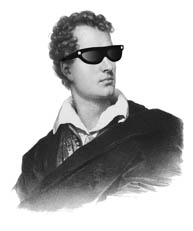P.O.V.: Lifestyles of the rich and famous; why do we care?
P.O.V.: Lifestyles of the rich and famous; why do we care? McGill University
User Tools (skip):
POV
Lifestyles of the rich and famous; why do we care?
Britney Spears has been admitted to a psychiatric hospital. Posh Spice has a new tattoo. Paris Hilton has been photographed wearing five different outfits in one day. And Amy Winehouse has gone to rehab after all.
These are just a few of the stories that have emerged from the seemingly unstoppable industry of celebrity gossip in the last week. While Britney and Amy are obviously in crisis, it’s business as usual for Paris and Posh. Yet these stories are reported next to each other as though of equal importance. They also appear alongside coverage of more newsworthy events, such as the battles for U.S. presidential nominations. But even that sometimes seems more about celebrity gossip than substantive policy. With Oprah stumping for Obama, Arnold Schwarzenegger supporting John McCain and Chuck Norris (who?) endorsing Mike Huckabee (who?), action heroes and daytime divas have generated almost as many column inches as some of the candidates.

If Lord Byron were still with us.
TZIGANE
We live in a culture saturated in celebrity, where the logic of celebrity seems to be rapidly colonizing all areas of public life. New starlets appear (Hello, Paris), old stars fade away (So long, Chuck), and images are reinvented (Welcome back, Arnie). How should we understand this situation, and where did it come from?
Although, as a culture, we are obsessed by celebrities, very few of us have given much thought to the history of celebrity culture. Most of us assume that we’ve always had celebrities, or that our fascination with celebrities is unprecedented in its intensity. But neither of these assumptions is true.
Celebrity culture began at an identifiable point in the past and we can track its historical shifts with some precision. Some have suggested celebrity emerged with the development of film at the end of the 19th century. I suggest that they’re right to link celebrity with a new technology, but they’ve got the wrong one. The crucial technology was a better printing press, and the innovations leading to it occurred some 100 years earlier.
Industrial printing, rising literacy rates and improved distribution infrastructure created a sense of “information overload” never before experienced. These conditions also left readers and writers feeling alienated from each other. Unlike earlier ages when manuscript circulation or subscription publication was the norm, there was no longer any prior connection between them. Celebrity culture originally emerged to solve these problems. Authors, publishers, artists, engravers and journalists worked together to brand an individual’s identity so he or she would stand out from the crowd. As a result, actors such as David Garrick, sportsmen such as the boxer Daniel Mendoza and authors such as Lord Byron became the first modern celebrities.
A new vocabulary was required to refer to these new figures on the public stage. In 1751, Samuel Johnson recalled a time when he “did not find [him]self yet enriched in proportion to [his] celebrity.” He used the word to name a desirable personal attribute for the professional man of letters. A century later, in 1849, a character in one of Dinah Mulock Craik’s novels asked, “Did you see any of those ‘celebrities,’ as you call them?” Using a form of the word that was evidently still unfamiliar, Craik employed it as a concrete noun. Something important about the nature of fame had changed in the century that separated Johnson from Craik. Celebrity was no longer something you had, but something you were.
Celebrity culture helped people to feel less detached from their idols by giving the impression that to read a poem by Byron or to look at a picture of Garrick was to experience a kind of relationship with them. In my book on Byron, I call this “the hermeneutic of intimacy,” because it’s a way of reading that constructs a powerful emotional connection between the celebrity and the consumer.
In the age of 24-hour gossip, you can get more updates about Britney or Amy than you get about the lives of your own family. Some devoted fans feel emotionally closer to their idols than to almost anyone they’ve met in the flesh.
So next time you open a magazine to check out the latest long-lens pictures of Britney’s public meltdown, take a moment to zoom out and remember that you’re taking part in a cultural phenomenon whose history stretches back farther than you might think.
Tom Mole is an assistant professor in the Department of English and the author of Byron’s Romantic Celebrity (Basingstoke: Palgrave, 2007). He is currently editing a collection of essays called Romanticism and Celebrity Culture 1750-1850, to be published by Cambridge University Press.

